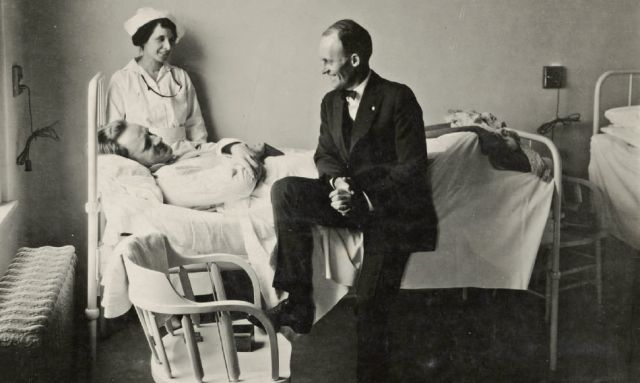
The American Legion has continuously fought for all who have borne the battle.
The New York Times reported on June 2, 1922, that an average of two veteran suicides were taking place per day across the United States. The article referenced C.J. Harris, a verterans disability cliams specialist at The American Legion's national headquarters.
“Almost without exception, the men were in the battle lines in France,” the Times reported. “These soldiers, the Legion official contends, were discharged by Army doctors as normal. Since the war, however, the men, struggling for a living, have undergone mental anguish that their war-racked nerves could not withstand.” The article noted that the Legion called for drastically improved mental health care as part of a $17 million commitment for new veterans hospital construction.
By that time, The American Legion had already scored multiple victories in the battle to improve care for veterans who had come home physically or psychologically disabled from wartime service. The U.S. government was woefully unprepared to handle a massive wave of disabled veterans needing care, benefits and opportunities.
Five weeks after the organization’s first national convention, American Legion department commanders and adjutants gathered in the nation’s capital for what was called the first “Rehab Washington Conference.” The Legionnaires were there to lobby for better health care and fair disability compensation for those who had lost limbs, eyesight and mental faculties during the war. During the conference – an early predecessor to the Legion’s annual Washington Conferences of today – the group persuaded Congress to more than double disability compensation for severely wounded veterans.
The American Legion’s position on care for veterans would shape policy for the next 100 years, and beyond. American Legion service officers have been front-line advocates for veterans and their families over the past century, handling health care, disability benefits applications, employment and education needs for millions, one case at a time, face to face, free of charge, worldwide.
National American Legion policy statements and recommendations would become law and establish unprecedented government institutions, such as the U.S. Veterans Bureau that evolved into the Department of Veterans Affairs, and the Servicemen’s Readjustment Act of 1944 that transformed the nation in the second half of the 20th century after its initial purpose was to provide support for medically discharged World War II veterans.
Through the decades, as political support waxed and waned, The American Legion stood on its founding principles and abided by a promise found in the final line of the organization’s constitutional preamble: “To consecrate and sanctify our comradeship by our devotion to mutual helpfulness.”
Thousands of activities, services, resolutions, testimonies and breakthroughs have fulfilled that vow, which has proven a continuous need as services for new generations of veterans have come under budgetary fire, public scrutiny, misunderstanding and complacency about how the nation should care for those who have borne the battle.
- Magazine

